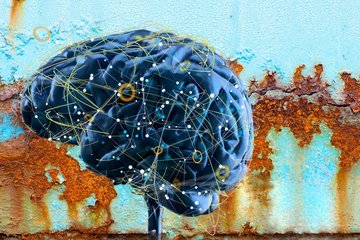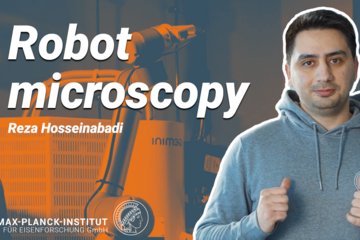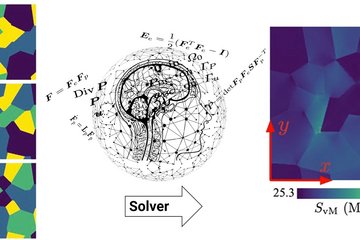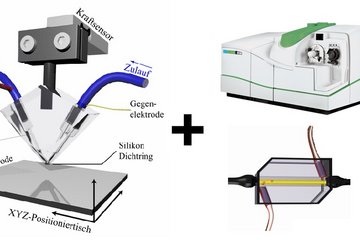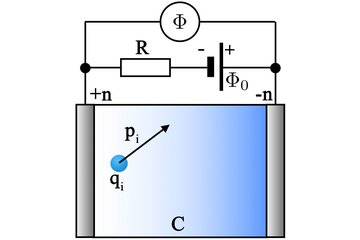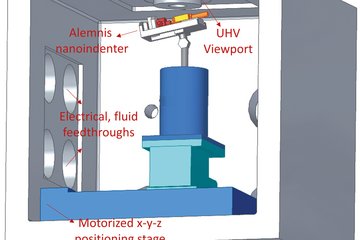All genres
781.
Talk
Liquid Metal Embrittlement: Linking Small Scale Wetting Phenomena and Mesoscale Pattern Formation Processes. MRS 2012, Boston, MA, USA (2012)
782.
Talk
Ab initio point defects up to melting: Deviations from Arrhenius-like behavior. MRS, Fall meeting, Boston, MA, USA (2012)
783.
Talk
Scale Bridging Modeling of Hydrogen Embrittlement. 2012 MRS Fall Meeting & Exhibit, Boston, MA, USA (2012)
784.
Talk
Fully ab initio determination of free energies: Basis for inverse approaches in materials design. MRS Fall Meeting, Boston, MA, USA (2012)
785.
Talk
Combining ab initio calculations and high resolution experiments to improve the understanding of advanced Mg-Y and Mg-RE alloys. 7th Annual Conference of the ARC Centre of Excellence for Design in Light Metals, Melbourne, VIC, Australia (2012)
786.
Talk
The influence of magnetic excitations on the phase stability of metals and steels. Seminar Talk at Institute for Pure and Applied Math, UCLA, University of California, Los Angeles, CA, USA (2012)
787.
Talk
Hydrogen in fcc antiferromagnetic FeMn: An ab-initio study. SFB761 annual retreat meeting 2012, Bad Neuenahr, Germany (2012)
788.
Talk
Ab initio based multiscale modeling of structural materials: From a predictive thermodynamic description to tailored mechanical properties. MMM 2012 - Multiscale Materials Modeling Conference, Singapore City, Singapore (2012)
789.
Talk
Introduction to Density Functional Theory from a Materials Science Perspective. Workshop, Lake Arrowhead, CA, USA (2012)
790.
Talk
Materials design based on ab initio thermodynamics. Harnessing the Materials Genome 2012, Vail, CO, USA (2012)
791.
Talk
Ab initio computation of free energies. MDWS1: Workshop on Quantum and Atomistic Modeling of Materials Defects, Los Angeles, CA, USA (2012)
792.
Talk
Combined Experimental and Theoretical Study on the Ductilizing Effect of Rare Earth Elements in Magnesium Alloys. MMM2012, 6th International Conference on Multiscale Materials Modeling, Singapore City, Singapore (2012)
793.
Talk
Alloy fluctuations in III-Nitrides revisited by aberration corrected transmission electron microscopy. International Workshop on Nitride Semiconductors 2012, Sapporo, Japan (2012)
794.
Talk
Thermodynamics of PM Fcc Iron - First steps and preliminary results. 3rd Scientific Retreat, ICAMS, Münster, Germany (2012)
795.
Talk
Scale bridging modeling of hydrogen embrittlement. ICAMS Klausurtagung, Münster, Germany (2012)
796.
Talk
Consequences of H-Vacancy Interactions: An Ab Initio Insight. International Hydrogen Conference, Jackson Lake Lodge, Moran, WY, USA (2012)
797.
Talk
Introduction to Density Functional Theory from a Materials Science Perspective. IPAM Workshop, Los Angeles, CA, USA (2012)
798.
Talk
Understanding H-embrittlement in high-strength steels by ab initio methods. 2012 International Hydrogen Conference, Moran, WY, USA (2012)
799.
Talk
Fully ab initio determination of materials properties at finite temperatures. ECMPCA, Porto Heli, Greece (2012)
800.
Talk
Density functional theory: From the chemical bond to microstructural information. Workshop Multiscale Material Modeling 2012, Bad Herrenalb, Germany (2012)


